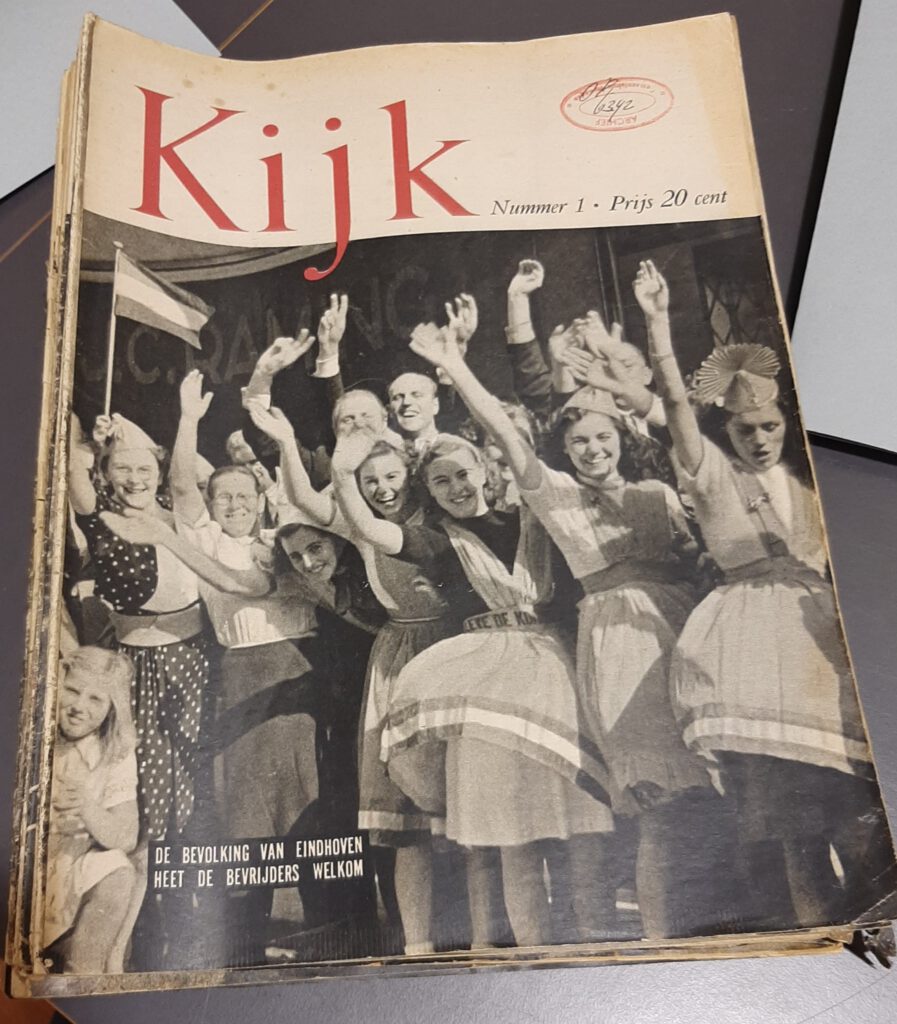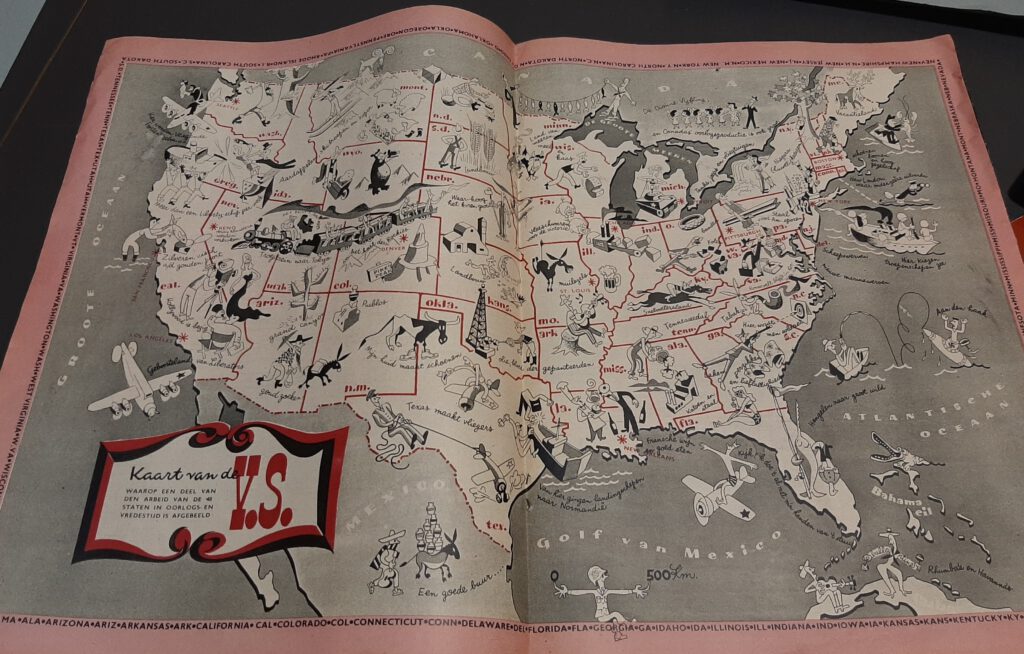Liberation
Liberation as a tool:
Mapping how American wanted you to see them
When you think about America and its position in the world nowadays, most will say that it holds a central position in the world’s affairs as the leader of the democratic, western world. Opinions about whether it should be vary, but that it stands at the very top of the intergovernmental system structured with organizations like NATO and the UN is widely accepted as a fact. The world revolves around the US and that is the way things are supposed to be is what is generally thought. The conception of a transatlantic bond between Europe and America is deemed as a natural process by most, but is it?
War INformation
The idea that the process of forming an Atlantic Community is natural is not correct, academics have found. The transatlantic alliance that we take for granted nowadays was actually created and curated consciously by the American government, and the liberation of Europe played a crucial role in what would be a successful operation. The Netherlands is an interesting case within the larger concept of the liberation used as a tool for creating an Atlantic community with America as a leader. When in 1944 operation Market Garden failed, the liberation of Europe was set to a halt, which left the northern half of the Netherlands in the hands of the German occupiers for another year. Due to a legal agreement, the

Image
The cover of the very first edition of KIJK magazine.“ KIJK: het heden in woord en beeld.”, no. 1.
American general Eisenhower had full administrative power over the liberated Netherlands until the rest would be liberated in 1945. This provided a unique opportunity for the American Office of War Information (OWI), the government body tasked with convincing Europe of America’s greatness, to spread propaganda products among the Dutch people.
The magazine KIJK is one of the projects that the OWI included in these projects. KIJK was a bi-weekly magazine that was published in the Southern, liberated part of the Netherlands in 1944-1945. The goal of the magazine, as written in the very first edition, was as follows: “Het eenig doel van KIJK is in de Lage Landen gedurende hun bevrijding en totdat hun bladen zelf in vrijheid kunnen verschijnen, het heden in woord en beeld te vertolken”. (The only goal of KIJK is to represent the present in text and image in the Netherlands during their liberation and until their own magazines can appear in liberty) The magazine presented itself as an innocent, objective form of the free press that would inform the liberated Dutch citizens about the developments of the war, nothing more. Looking at the contents, though, this surely was not the case. KIJK is an excellent example of the OWI’s desire to establish America as the moral leader of the new transatlantic alliance that would be created after the war. The magazine primarily contains articles that educate the Dutch people about American culture, American war-power, and American democracy, leaving all the bad parts like segregation or poverty out.
Sources
Lara Silver. “The Political Use of Metaphor in the Construction of the Atlantic Community”. In: European Community, Atlantic Community?, edited by Aubourg, Bossuat and Scott-Smith, 60-73. Soleb: Paris, 2008.
Peter Romijn. “Liberators and Patriots: Military Interim Rule and the Politics of Transition in the Netherlands, 1944-1945,” In Seeking Peace in the Wake of War: Europe, 1943-1947, ed. Romijn Peter, Hoffmann Stefan-Ludwig, Kott Sandrine, and Wieviorka Olivier. Amsterdam: Amsterdam University Press, 2015.
Marja Roholl. “An Invasion of a Different Kind: The U.S. Office of War Information and “The Projection of America” Propaganda in the Netherlands, 1944–1945.” In Politics and Cultures of Liberation: Media, Memory, and Projections of Democracy, edited by Hans Bak, Frank Mehring, and Mathilde Roza, 17-38. Leiden; Boston: Brill, 2018.
A map of the US
To give you an idea of how exactly the OWI constructed this image, you can look at the picture below. This is a photograph of an article in KIJK no. 6 called “Kaart van de V.S.” (Map of the US), in which America’s geographical and regional characteristics are depicted by providing a map of the US with information scribbled within it. The fact that this map is included, is already an example that KIJK’s purpose goes beyond providing information about the war. On the one hand, you could say that this map shows how different regions in America contributed to the war, and since America is one of the main players of liberation, they are simply providing context. This characteristic of this map is visible, among others, in Texas, where a dock is shown with the text “van hier gingen landingschepen naar Normandië” (From here ships went to Normandy), and in Oregon, where a plane is depicted with the text “hier worden Vliegende Forten gebouwd” (Here flying forts are built). The map includes other information as well, though, information that does not concern war efforts at all. In California, for example, you can see a drawing of an actress behind a camera with the text “Hollywood is bezig” (Hollywood is in full swing). Another example is Louisiana, where a chef and a waiter are drawn, commenting that the region has “Franse wijn en goed eten” (French wine and good food).
In the combination of these two aspects, showing individual region’s efforts to liberation, and providing general information about American regions and culture, the OWI’s true goal comes to light. This map shows America as attractive and rich in culture on the one hand, but on the other hand, you can see that America has adapted fully to the war and has become a well-oiled war machine. The OWI shows America how they want the Dutch to know America, and that is striking. Take a look at the map yourself, noting the small details that it contains, and see how America wanted the Europeans to look at them, planting the seeds of an Atlantic community that would sprout into the world we know today.

Image: Article called “Kaart van de V.S.”, published in KIJK no. 6.